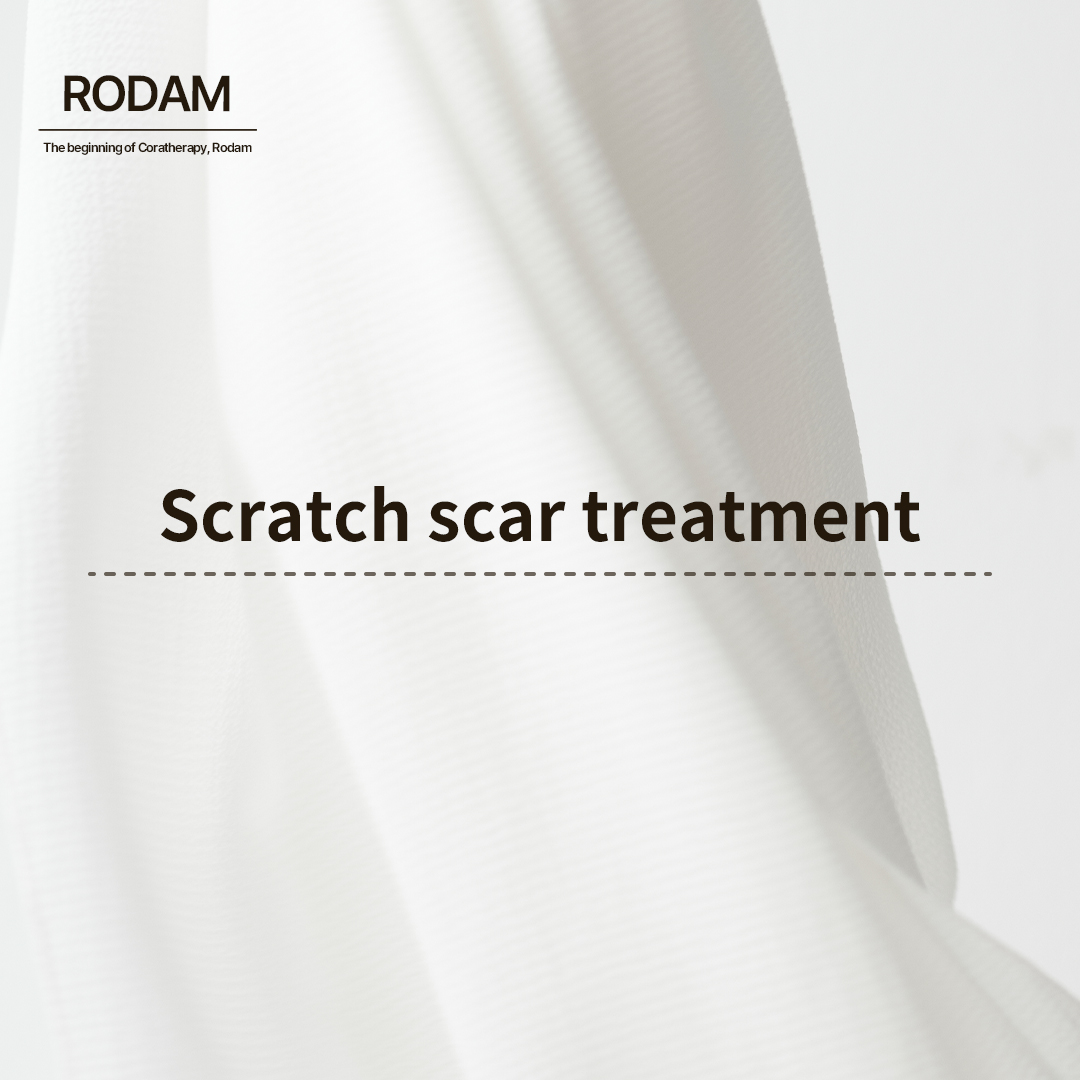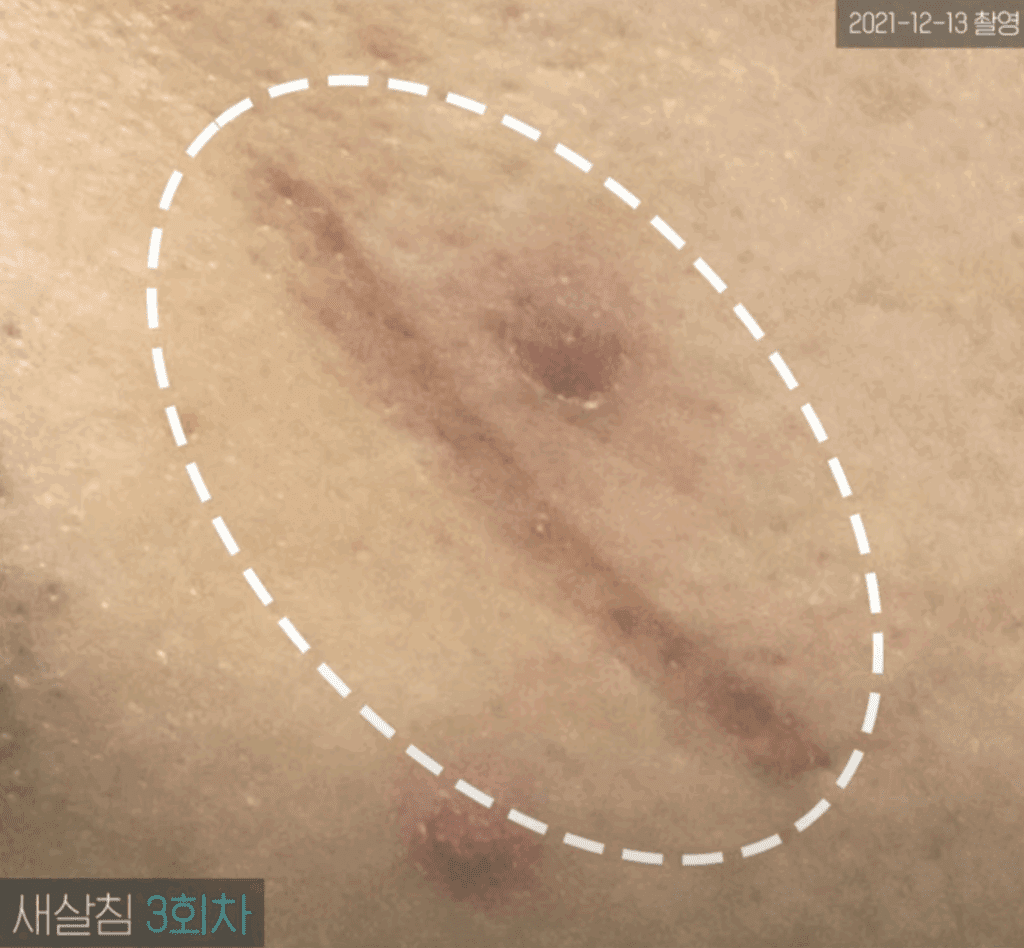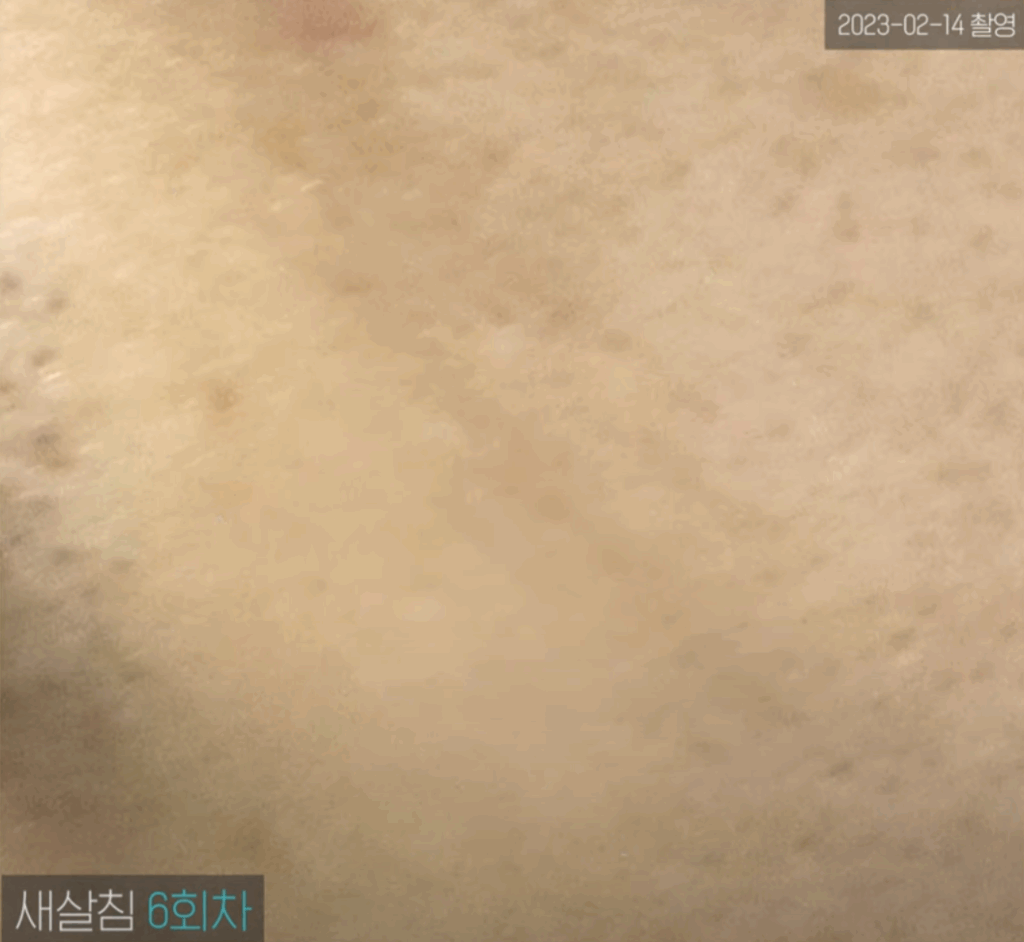
Review of Coratherapy Treatment for Scar Caused by Scratching at Rodam Korean Medicine Clinic
Hello, this is Rodam Korean Medicine Clinic, starting Coratherapy to erase scars.
Today, we would like to introduce a case of a patient with an old scratch scar.
Scratch scars are often long and located on the face,
and most of them are old scars because they are usually caused during childhood.
The characteristic of scratch scars is that a soft object meets a hard object,
causing part of the soft object to be lost and leaving a scratch.
The width may vary depending on the object that caused the scratch,
but most scratches are generally long in shape.
They can be narrow and long or wide and long.
The fact that a scar remains means that the skin sustained a deep wound to some extent.
There may be deeper scars, but most scratch scars
tend to have a certain depth.

Case :: Scratch scar from 30 years ago
History :: No prior treatment experience
Report :: 6 sessions of Coratherapy
Today’s case involves a man in his early 40s.
He mentioned that the scar was caused by a fingernail scratch before the age of 10.
In other words, it is a scratch scar that is over 30 years old.
He had never received treatment for the scar
and had carried it for 30 years.
He mentioned that the scar was smaller when he was younger,
but over time, the width and length of the scar increased.
We assume that as he aged and his face grew larger,
the skin stretched, causing the scar to widen and lengthen.

You might wonder if scratch scars have a good prognosis.
Since they are generally wide and long,
they can occupy a significant area of the face.
However, because scratch scars are usually caused by a single, continuous action,
their shape tends to be uniform.
As a result, the prognosis for scar treatment is generally better than expected.
However, if the edges of the scar are clean, the prognosis can be even better.
If the edges are uneven or the base of the scar is bumpy,
the prognosis should be considered more conservatively.

I gave the patient two predictions.
Although the scar is long, its edges are clean and it is not very deep,
so I predicted that it could improve quickly and cleanly.
I estimated that about 6 sessions would be sufficient.
However, the scar was located near the nasolabial fold.
The nasolabial fold is a prominent expression wrinkle,
and repeated movements in this area can interfere with the healing process,
potentially affecting the prognosis.
Therefore, I advised that 6 to 10 sessions might be necessary.


After 3 sessions of Coratherapy
Let’s look at the photo after 3 sessions.
Although I provided two predictions, the depth of the scar has been filling in faster than expected.
This case falls into the category where treatment progresses well
due to the favorable shape of the scar.
There was still some redness, which is part of the treatment process.
The base of the scar has been smoothing out well,
and the boundary between the normal skin and the scarred skin
is aligning nicely.
The patient mentioned that when touching the scar area,
it no longer felt deeply indented but rather slightly uneven.
Based on this, I estimated that about 6 sessions would be sufficient to complete the treatment.


After 5 sessions of Coratherapy
Now, let’s look at the photo after 5 sessions.
This photo was taken 11 months after the 5th session,
and the redness has almost completely faded.
In the photo, the scar is barely visible.
However, when viewed in person, there was a faint, thin line remaining,
making it look like there were two nasolabial folds.
Since a line was still visible, we couldn’t conclude the treatment at this stage.
The patient expressed a desire to further reduce the visibility of the scar,
so we decided to continue treatment to make the line as faint as possible.


After 6 sessions of Coratherapy
Let’s look at the photo after 6 sessions.
The edges of the scar have become smooth and are no longer visible.
The narrow, long line is now almost imperceptible.
Most importantly, the difference in texture
between the normal skin and the scarred skin has almost disappeared.
This is because there was minimal fibrosis at the base of the scar,
so the texture difference between the normal and scarred skin
was negligible.
We concluded the treatment at this point,
with the agreement that the patient would return
if any indentation or unevenness reappeared after the redness faded.

Many patients with scratch scars, including this one,
mention that they’ve had the scar for so long that they stopped paying attention to it.
However, due to the nature of scratch scars,
they often occupy a significant area of the face,
leading many to feel self-conscious about them for a long time.
Because the scars have been present for so long,
many people believe that they are impossible to treat
or that treatment would be very difficult.
However, regardless of how old the scar is,
or how wide the indented area is,
scratch scars generally respond well to treatment.
So, there’s no need to worry too much.
The prognosis can vary depending on the shape and location of the scar,
so it’s best to visit the clinic for a consultation
to analyze the prognosis of your scar.
Based on this analysis, you can make an informed decision about treatment
and achieve good results.
Don’t hesitate to visit us at Rodam Korean Medicine Clinic.
We hope today’s post has alleviated some of your concerns about scratch scars.
If you would like more detailed information or a consultation,
please feel free to visit Rodam Korean Medicine Clinic.
Rodam is always here for you.


